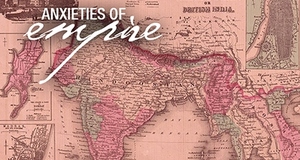From Cornell International Affairs Review VOL. 6 NO. 2Bangladesh: A Case Study in the Rise of the Nation-StateIt was incredibly difficult for the emergent nation-state of Bangladesh to mount a stable defense against West Pakistan because the vast majority of soldiers were non-Bengali. Indeed, "representation of Bengalis in the army was…believed to be 10% or less".26 An ad-hoc guerrilla army was created known as the Mukti Bahini ("freedom fighters"), but was mostly composed of student and youth volunteers from Bangladesh who were not militarily trained. Since Mujibur Rahman had been arrested, there was also no organized political system. Finally, guerrilla forces were faced with a distinct lack of military equipment.27 In contrast, West Pakistan had a professional military army that had the advantage of striking first without regard for civilian casualties. India's strategy was to initiate a two-front war, with one segment of Indian forces fighting along the IndiaBangladesh border and the other engaging West Pakistan directly on its own border It is clear that Indian intervention was integral in helping Bangladesh secure independence. First, India helped Bangladesh in erecting a provisional government that would allow for a unified military command.28 This action was technically illegal since India was supporting a rebel force and had not formally declared war against Pakistan. However, this was incredibly important in coordinating the joint military commands of India and Bangladesh, which were opposed to West Pakistan. Although India did not legally enter the war until December 1971, between March and November India tacitly supported the Mukti Bahini by providing them with safe havens across the India-Bangladesh border from which to attack West Pakistani forces. In addition, Indian artillery provided covering fire to Mukti Bahini forces that encouraged them to push deeper in the West Pakistan-held territories in Bangladesh; at the same time, India firmly maintained its border integrity and refused to allow West Pakistani troops across the Indian border in pursuit of rebels.29 These tactics were incredibly demoralizing for West Pakistani soldiers and allowed Bangladesh to endure as India prepared for legal entry into the war.India finally entered the war on December 3, 1971 after a military base was bombed by West Pakistani forces.30 The war had progressed from one of Bangladeshi independence into a full-scale conflict between two regional powers; it was now called the Indo-Pakistani War of 1971. India had 833,800 troops not including the Mukti Bahini rebels (number estimates were not provided) compared to Pakistan's force of 365,000.31 To make matters worse for West Pakistan, India's strategy was to initiate a two-front war, with one segment of Indian forces fighting along the India-Bangladesh border and the other engaging West Pakistan directly on its own border.32 This approach proved devastating for West Pakistan, as it was firmly prevented from moving troops between Bangladesh and West Pakistan due to the geographical separation of the two sections by India and forcing it to allocate a large number of resources toward defending its heartland in the West. West Pakistan quickly realized that its military position was unsustainable, and surrendered on December 16, 1971, effectively recognizing Bangladesh's claim to independence. At last, the identities of a nation and a state were consolidated into the declaration of a new nation-state. The original purpose of this study was to analyze the factors that led to the separate ideas of "nation" and "state" in East Pakistan being united as Bangladesh, a singular nationstate. Bangladesh was analyzed in comparison to Mann's theory, which was based on the formation of European nation-states. This study demonstrated that the most important factor in Bangladesh's nation-state consolidation was a nationalism based on common language and ethnicity. This also reinforces Anderson's theory of "imagined communities", since a Bengali identity based on those factors was given more prominence in order to distance East Pakistan from West Pakistan. It is important to note that other factors such as political disenfranchisement and economic inequality also helped to separate the two provinces. In other regions of the world, those factors may actually play a larger role in determining the political outcome of the nation and state. This may be especially true among regions that display a lesser degree of cultural, linguistic, and ethnic homogeneity than Bangladesh since national consciousness would need to develop in spite of those differences. In other regions, religion may also serve as a unifying factor. However, with regard to Bangladesh, it can be concluded based on the evidence in this study that nationalism based explicitly on cultural, linguistic, and ethnic commonalities (rather than religious homogeneity) played the most important role in determining the transformation of an "imagined community" into a unified nation-state. The most important factor in Bangladesh's nation-state consolidation was a nationalism based on common language and ethnicity However, the question that now arises is, how do we explain the lack of a nation-state despite the presence of strong, secessionist nationalism? Indeed, the many active, grassroots nationalist movements in the modern world that fail to crystallize into separate states are clear evidence that nationalism is not enough in and of itself to guarantee the emergence of a unified nation-state. Analysis of this fact illustrates the second conclusion of this study. Tilly theorized that war-making was the primary factor in nation-state development; while Bangladesh initially followed Tilly's model since it was officially created by the Indo-Pakistani War of 1971, it also serves as a counterexample to aspects of the same theory because the war was won by an external force. As shown by this study, independence from West Pakistan would not have been likely without India's timely intervention and support. Thus, a plausible explanation for the lack of nation-states despite a strong sense of nationalism is that these "imagined communities" are not only incapable of sustaining a monopoly on violence, but external forces are also incapable or unwilling to commit sufficient resources in this regard. Therefore, a useful future study would be an analysis of the nationalism of communities that have not developed nation-states and the possibility of external intervention to help them achieve their goals. ReferencesAnderson, Benedict. Imagined Communities: Reflections on the Origin and Spread of Nationalism. London and New York: Verso, 1991. 1-46. Print. Das, Mitra. From Nation to Nation: A Case Study of Bengali Independence. Calcutta, India: Minerva Associates, 1981. 88-111. Print “Islamic Republic of Pakistan: Language.” CultureGrams World Edition. ProQuest, 2011. Web. 13 April 2010. Kyle, Major, Royal Canadian Artillery. “The India-Pakistan War of 1971: A Modern War.” GlobalSecurity. GlobalSecurity.org, 1984. Web. 10 Apr 2011. <http://www.globalsecurity.org/military/library/report/1984/KRG.htm>. Mann, Michael. The Sources of Social Power: The Rise of Classes and Nation-States, 1760-1914. 1993. 214-51. Print. Muhith, Abul Maal Abdul. American Response to Bangladesh Liberation War. Dhaka, Bangladesh: University Press Limited, 1996. 37-62. Print. Qureshi, Hakeem. The 1971 Indo-Pak War. Oxford, UK: Oxford University Press, 2002. Print. Tilly, Charles. Coercion, Capital, and European States A.D. 990-1990. Oxford, UK: Wiley –Blackwell, 1990. 19-33. Print. Uddin, Sufia M. Constructing Bangladesh: Religion, Ethnicity, and Language in an Islamic Nation. Chapel Hill, NC: University of North Carolina Press, 2006. 117-55. Print. Umar, Badruddin. The Emergence of Bangladesh: Class Struggles in East Pakistan (1947-1958). 1. Oxford, UK: Oxford University Press, 2006. 108-11. Print. Umar, Badruddin. The Emergence of Bangladesh: Rise of Bengali Nationalism (1958-1971). 2. Oxford, UK: Oxford University Press, 2006. Print. United States. Department of State: Bureau of Central and South Asian Affairs. Background Note: Bangladesh. Washington: Department of State. Web. 10 Apr 2011. Department of Defense: Near East South Asia Center for Strategic Studies. An Atlas of the 1971 Indo-Pakistani War: The Creation of Bangladesh by John H. Gill. Washington: National Defense University Press. Print 10 Apr 2011. Weber, Max. “Politics as a Vocation.” Free Students Society. Munich University, Munich, Germany. Jan 1918. Lecture. Endnotes
Image AttributionBy Mostaque Ahammed (Flickr) [CC-BY-SA-2.0 (http://creativecommons.org/licenses/by-sa/2.0)], via Wikimedia Commons Suggested Reading from Inquiries Journal
Inquiries Journal provides undergraduate and graduate students around the world a platform for the wide dissemination of academic work over a range of core disciplines. Representing the work of students from hundreds of institutions around the globe, Inquiries Journal's large database of academic articles is completely free. Learn more | Blog | Submit Latest in International Affairs |



















